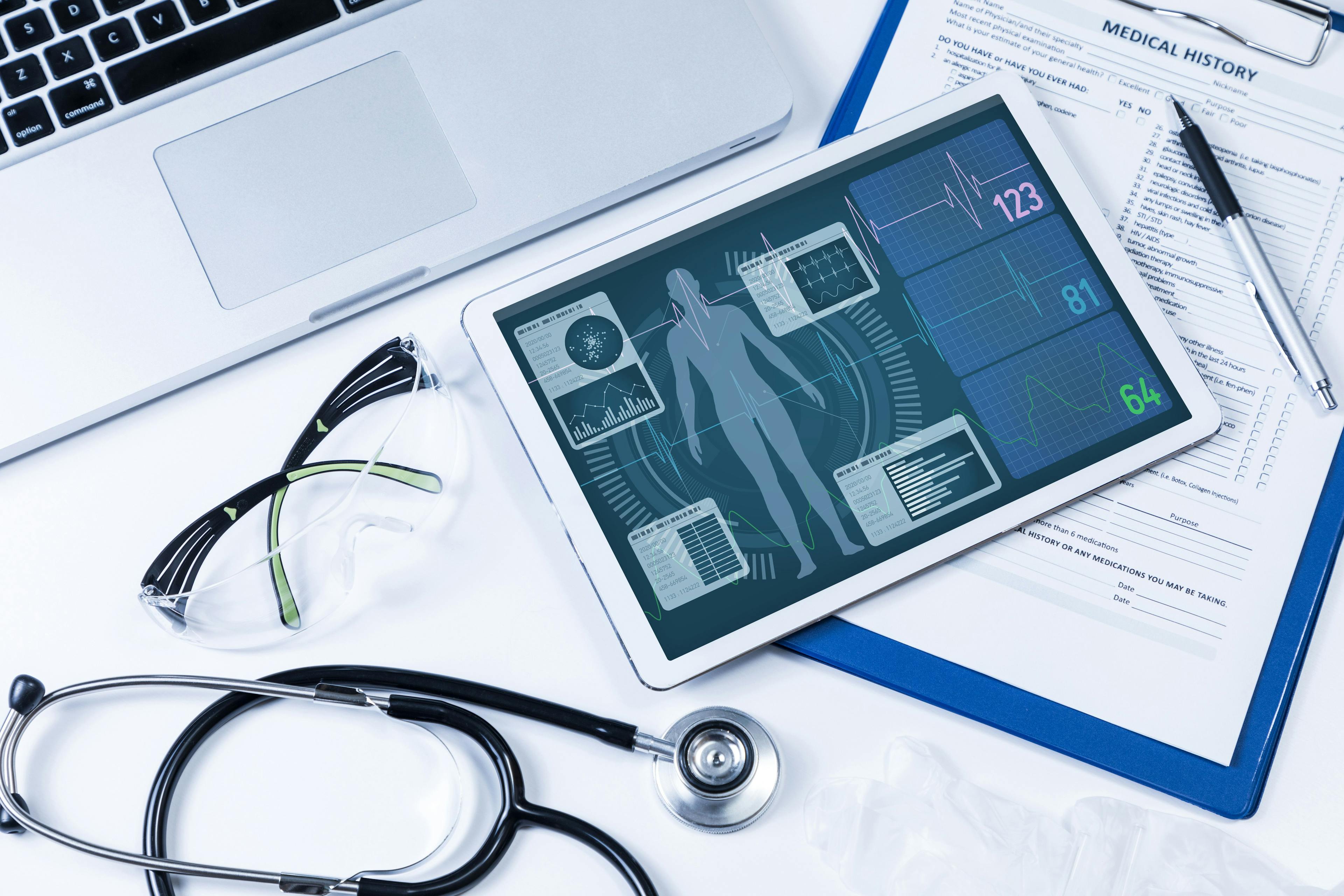New Drugs Take Aim at Autoimmune Diseases
Potential agents to battle inflammation and other processes move through development pipeline.
Autoimmune diseases are often debilitating and, in some cases, life-threatening. A National Institutes of Health study revealed that as many as 23.5 million Americans experience one of more than 80 autoimmune diseases, and that number continues to rise every year.
Here is a look at some drugs at various stages of development for autoimmune diseases.
Tepezza (teprotumumab-trbw)
In January, the FDA approved Tepezza for thyroid eye disease (TED) in adults. Srini Ramanathan, Ph.D., vice president of developmental sciences at Horizon Therapeutics, which is headquartered in Ireland, says the company is investigating uses for Tepezza beyond TED. The drug blocks insulinlike growth factor type 1 receptor, which is part of the signaling pathway activated by autoantibodies in TED, leading to inflammation and expansion of tissue behind the eye.
“With Tepezza, we are currently conducting a trial in fibrotic TED, in which there is no longer active inflammation, but symptoms such as eye bulging and double vision remain,” Ramanathan says. “Beyond TED, we believe that Tepezza has a role in addressing the underlying mechanisms of fibrosis, which means it may have activity in diseases like systemic sclerosis.”
Horizon Therapeutics will begin an exploratory clinical trial later this year of diffuse cutaneous systemic sclerosis (dcSSc), a subtype of systemic sclerosis that causes fibrosis over large areas of the skin and often involves internal organ damage, especially to the lungs, kidneys and gastrointestinal tract.
“We are excited about the possibilities for Tepezza because it interferes with underlying biology of inflammation and fibrosis at a mechanistic level,” Ramanathan says. “That could make it a promising candidate for systemic sclerosis or other diseases that involve fibrosis, and our development program will explore some of those opportunities in coming months.”
HZN-825
Another drug under investigation at Horizon is HZN-825, which is scheduled to be evaluated in a phase 2b trial in 2021.
“HZN-825 is an inhibitor of the lysophosphatidic acid receptor LPAR1,” Ramanathan says. “Lysophosphatidic acid (LPA) is a bioactive lipid that is normally produced at sites of inflammation or injury to promote healing. But in autoimmune diseases like dcSSc, elevated levels of LPA can bind with LPAR1 and lead to fibrosis.”
Ramanathan says Horizon was encouraged by the results of a phase 2a study in patients with dcSSC published in 2018 that showed an improvement in skin thickness scores. He says HZN-825 is a complementary mechanistic approach to Tepezza.
Lenabasum
Yuval Cohen, Ph.D., CEO of Corbus Pharmaceuticals in Norwood, Massachusetts, touts lenabasum (JBT-101), an oral, nonimmunosuppressive small molecule that binds to the cannabinoid receptor type 2 on immune cells, as a new drug in the pipeline. This receptor plays a key part in inflammation and fibrosis. If successful, lenabasum would be the first drug in this class to be approved.
“We have promising preclinical and clinical data on lenabasum in a variety of animal models and in three separate clinical indications where it was tested,” Cohen says. “For each of these indications, lenabasum is currently in its final, large, multinational clinical study seeking to confirm its efficacy and provide the basis for its approval.”
The indications are systemic sclerosis, dermatomyositis and cystic fibrosis. Lenabasum, which was previously called anabasum, also is being tested in an early stage clinical study for lupus.
Top-line data from studies of lenabasum as a treatment for systemic sclerosis and cystic fibrosis are expected this summer, Cohen says. Systemic sclerosis, which causes a buildup of scar tissue, affects the skin and sometimes the joints, gastrointestinal tract and other organs. The autoimmune disease affects up to 75,000 Americans.
A key unmet need in cystic fibrosis is the treatment of inflammation to reduce pulmonary exacerbations, an acute worsening of inflammation in the lungs with an increase in respiratory symptoms, Cohen says. Lenabasum is being tested as a treatment.
Olokizumab and ibrutinib
Because currently approved medications can’t control rheumatoid arthritis (RA) in about 1 in 4 patients with the disease, there is a need for new therapies.
Anca Askanase, M.D., MPH, a rheumatologist at Columbia University Irving Medical Center in New York City and director of rheumatology clinical trials, shares a long list of candidates: selective JAK inhibitors, Bruton tyrosine kinase inhibitors, phosphoinositide-3- kinase pathway inhibitors, antibodies to the granulocyte-monocyte colony-stimulating factor receptor and bispecific antibodies that target type 2 cytokines. But she singles out two for special mention.
“Olokizumab is an anti-IL6 immune modulator in late phase 3 trials, and ibrutinib (Imbruvica) is an oral BTK inhibitor, an important regulator of B-cell proliferation and myeloid cell activity, which was effective and safe in the treatment of MTX (methotrexate) nonresponders in a phase 2 trial,” she says.
“Each new drug, each new MOA (mechanism of action) is a step forward,” Askanase says. “RA pathogenesis is not fully understood. The medications we have used thus far provide limited response rates, (and) combination therapies have higher success rates but are limited by (adverse) effects.”
Interferon alfa-2b
People with autoimmune diseases are particularly vulnerable to the latest known virus, which is why BetterLife Pharma has been putting efforts into researching drugs that can help.
Ahmad Doroudian, Ph.D., CEO of the Montreal company, says it is investigating the effectiveness of interferon alfa-2b for patients with the virus and plans to launch a randomized, double-blind, placebo-controlled phase 3 study in the coming weeks.
“Interferons are antiviral agents that modulate functions of the immune system,” Doroudian explains. “First identified in 1957, they were named for their ability to interfere with viral replication by protecting cells from infections. Interferon marshals the body’s own defenses against a broad spectrum of infections.” These agents also work in a variety of ways, such as by altering cell membranes to deny viruses entry or exit. Interferons are generally classified into three groups: IFN-1, IFN2 and IFN-3.
“At (BetterLife), my team and I have been working on our own version of interferon alfa-2 (IFNa2b), AP-003,” Doroudian says. “It is our patented, isoform-free inhalation formulation, and its first target indication will be early stage COVID-19 disease. We chose to focus on developing IFNa2b and believe it will be successful because, while all IFNs are important for fighting viral infections and for the regulation of the immune system, IFN-1s are among the first cytokines produced during a viral infection.”
He says he believes that AP-003 will be a significant breakthrough for patients with the latest virus because IFNa2b has already been studied against other coronaviruses, including MERS-CoV, which causes Middle East respiratory syndrome, and SARS-CoV, which causes severe acute respiratory syndrome.
Keith Loria is a freelance writer in the Washington, D.C., area.

David Calabrese of OptumRx Talks Top Three Drugs in Pipeline, Industry Trends in Q2
July 1st 2020In this week's episode of Tuning Into The C-Suite podcast, MHE's Briana Contreras chatted with David Calabrese, R.Ph, MHP, who is senior vice president and chief pharmacy officer of pharmacy care services company, OptumRx. David is also a member of Managed Healthcare Executives’ Editorial Advisory Board. During the discussion, he shared the OptumRx Quarter 2 Drug Pipeline Insights Report of 2020. Some of the information shared includes the three notable drugs currently being reviewed or those that have been recently approved by the FDA. Also discussed were any interesting industry trends to watch for.
Listen



















